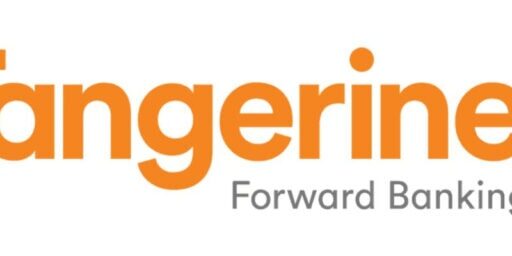Top Low-Cost Canadian DRIP Stocks Ranked by Yield, Dividend Growth and Discounts
DRIPs are already known as low-cost investment vehicles: the best ones have no fees for optional stock purchases or reinvestment of dividends. But what if you could get even more “bank” for your buck by focusing on the best of the best?
I’ve been a do-it-yourself DRIP investor for almost a decade. I started as an undergrad and over the years have refined my DRIP investment systems and strategies. If I were starting now, I would begin my research with the following ranking of Canadian DRIP programs.
I have given the most weight to discounts, followed by a history of dividend growth, the size of the minimum amount optional cash purchase and finally yield. Why these criteria? First, getting a discount to purchase stock that already costs you nothing in commissions is just like getting free money, and since it’s reinvested, all the better. Second, Since most DRIP’ers are long-term buy-and-hold investors, dividend growth is going to be one of the surest factors in the success of your investment. Finally, yield is informative regarding today’s purchase of the stock but is also the least reliable indicator since it is merely an effect of the stock’s current price and in itself may not signify anything long-term.
I have also specifically chosen to limit the list to DRIPs that have no, or very low, minimum amounts for optional stock purchases. That means this list does not include any DRIPs that require $250 or more for a minimum stock purchase. This is my own judgment call since most regular DRIP investors have been known to invest smaller amounts more regularly through dollar-cost-averaging rather than large lump-sums.
Top 12 100% No Fee, No- (Or Low) Minimum OCP Canadian DRIPs
With Discounts
- Bank of Montreal (TSX: BMO) – up to a 5% discount on reinvested dividends; excellent, regular dividend growth. No minimum amount for optional cash purchases.
- Enbridge (TSX: ENB) – 2% discount on reinvested dividends, excellent dividend growth with yearly increases; NO MINIMUM.
- TransCanada (TSX: TRP) – 3% discount; consistently and reliably raise their dividend yearly; $50 minimum.
- CIBC (TSX: CM) – 3% discount; usually increases dividend twice a year, except throughout this last financial crisis; $100 minimum.
- Bank of Nova Scotia (TSX: BNS) – 2% discount, excellent dividend growth, which has seen twice yearly increases for the last three years; $100 MIN.
No Discounts
- TransAlta (TSX: TA) – TransAlta used to maintain the same dividend for years with no increase, but that appears to be changing, with an increase in 2008 and again in 2009, surprisingly, despite the credit crisis. No minimum.
- Emera (TSX: EMA) – This electricity generation company consistently raises its dividend and there are modest growth prospects for the company, as well. $25 minimum.
- BCE (TSX: BCE) – These days analysts seem to buy BCE not for its growth prospects, but just for the yield. The stock shows some growth of dividends; these were not increased yearly between 2001-2006, but have been since then (save the period during which the Ontario Teacher’s Pension Plan was in the process of taking them over). The dividend was last increased August 2009. No minimum.
- Telus (TSX: T) – Between 2002 and 2005, Telus did not increase its dividend, but since 2006 there has been yearly dividend growth. $100 MIN.
- Suncor (TSX: SU) – Suncor is another top-notch Canadian company, but the stock has a low yield. Because of its potentially greater growth prospects right now, I’d rank this one slightly above IMO, despite the higher minimum. Dividends are increased somewhat regularly, with the most recent increase being September 2009. $100 minimum.
- Imperial Oil (TSX: IMO) – Imperial Oil is an excellently run company with great assets, but like Suncor has a low yield. Dividends have been raised somewhat consistently over the years, with it looking a bit better in the last five or so. $50 minimum.
- Bell Aliant (TSX: BA.UN) – Similar to BCE, little growth is expected in this stock itself, but investors like it for the distribution. After 2011, it will convert back to a corporation and might see a small dividend cut. There has been modest distribution growth, but no more is expected before 2011. $25 MIN.
This list is by no means a complete list of all Canadian DRIPs, but these are undoubtedly some of both the biggest and most popular plans. These stocks are frequently discussed in programs on BNN and also comprise some of Canada’s largest companies and employers. You can invest in U.S. DRIPs, too, but the process is a bit more complicated and requires you to have an American bank account or a chequing account drawn on U.S. dollars in Canada.
If a company you like isn’t on the list, it is probably because it does not have a DRIP (in the full sense of both free direct purchase and dividend reinvestment), or, as with many of the income trusts, the minimum monthly or quarterly required amount for purchase is high, such as $500 or even $1000 in some cases. I have tried to make the list as up to date as possible, but if you notice an error, please let me know.
Best DRIPs For Your Money
The best bets for DRIPs, assuming you like the companies as long-term investments, are the top 5 that also have discounts on the reinvestment of their dividends. Why pass up “free money”? That being said, companies change their discount offerings based on the market, so it is not uncommon to see reductions, increases, or even suspensions of the discount.
I've Completed My Million Dollar Journey. Let Me Guide You Through Yours!
Sign up below to get a copy of our free eBook: Can I Retire Yet?










I have never done DRIPs – how do I get to buy the shares – can I write to the company as I do not want to trade through a discount broker.
I wonder if you’d be able to update this article with current Canadian stocks that offers a DRIP with discounts. Seems a lot has changed since the post was first… posted.
Thanks!
Hi everyone,
I have a few questions regarding the optional purchase plan for BNS.TO (Bank of Nova Scotia).
1. I know there is a minimum of $100 for each remittance, my question is would they allow fractionals share purchase? or it can only purchase a whole share. (I’m talking about the optional purchase plan NOT DRIP)
2. For the optional purchase plan, is there a certain date or frequency on how often the shares will be purchased?? or is it accoriding to my cheque date that I will write to them and they would purchase the share on that particular date?
Thank you for all your help
Txs for the article. I have a synthetic DRIP in place with TDW. One thing I’m not clear about. Is TDW giving me the discount on new shares offered by companies like ENB and BMO? Sometimes I can’t figure out how they establish the reinvestment price…
I purchase some stocks through Questrade. I called Quest to get the stocks certificated and was told the cost is $300 to get this done. Judging from this price it will end up costing me more for the certificates ($3600 CND) which is just a little less than what I paid for the stocks. Is this price too expensive? And why does the stock need to be certificated and is certification needed for DRIPS. This is my first experience buying stocks on my own.
Check out http://cdndrips.blogspot.com/ for another list of Canadian DRIPs
This is a good article which has lead me to think of a few questions:
1. What happens if I own the same stock in multiple accounts? If I get a certificate does that allow me to DRIP only in the account from which that certificate orginated?
2. Is there a difference between stocks which issue dividends and those which issue distributions (e.g. Income trusts) in any significant way which would impact the DRIP process?
3. Has someone published a hypothetical analysis of the advantage of a “real” DRIP vs. a synthetic DRIP over a long period?
4. Once you possess the certificates, should they be placed in a safety deposit box, or is there a way to prove ownership and be made whole should they be destroyed in a house fire?
I can’t believe you didn’t mention Fortis, TSX: FTS. It has a 35 year record of increasing its dividend every year, the longest record for any company in Canadian history. Check out this chart http://www.fortis.ca/InvestorCentre/FortisStock/DividendHistory.aspx
I would pick Fortis over Emera any day!
Well, it’s definitely an interesting idea sorting or ranking Canadian DRIP&SPP Plans based on discount and OCP minimum, but honestly, considering there are only 16 corporations (plus 2 fringe corps EIF, OLY) it’s like trying to prioritize your children.
I think the focus should be if an investor chooses DRIPing, to ensure they are covering the major sectors for an attempt at diversification.
@rico,rph – Don’t buy your certificates through Questrade, it is ridiculously pricey. If you go through the Big 5 discount brokers, it’s only about $50-52 at each of them.
@Ray – I’m not positive about the RRSP question, since I haven’t tried putting them in my RRSP. As for TD honoring the discount, I believe they would on the reinvested portions (someone correct me if I’m wrong) – again, I’m not at the point yet where I’m pseudo-dripping certain stocks at the big brokers.